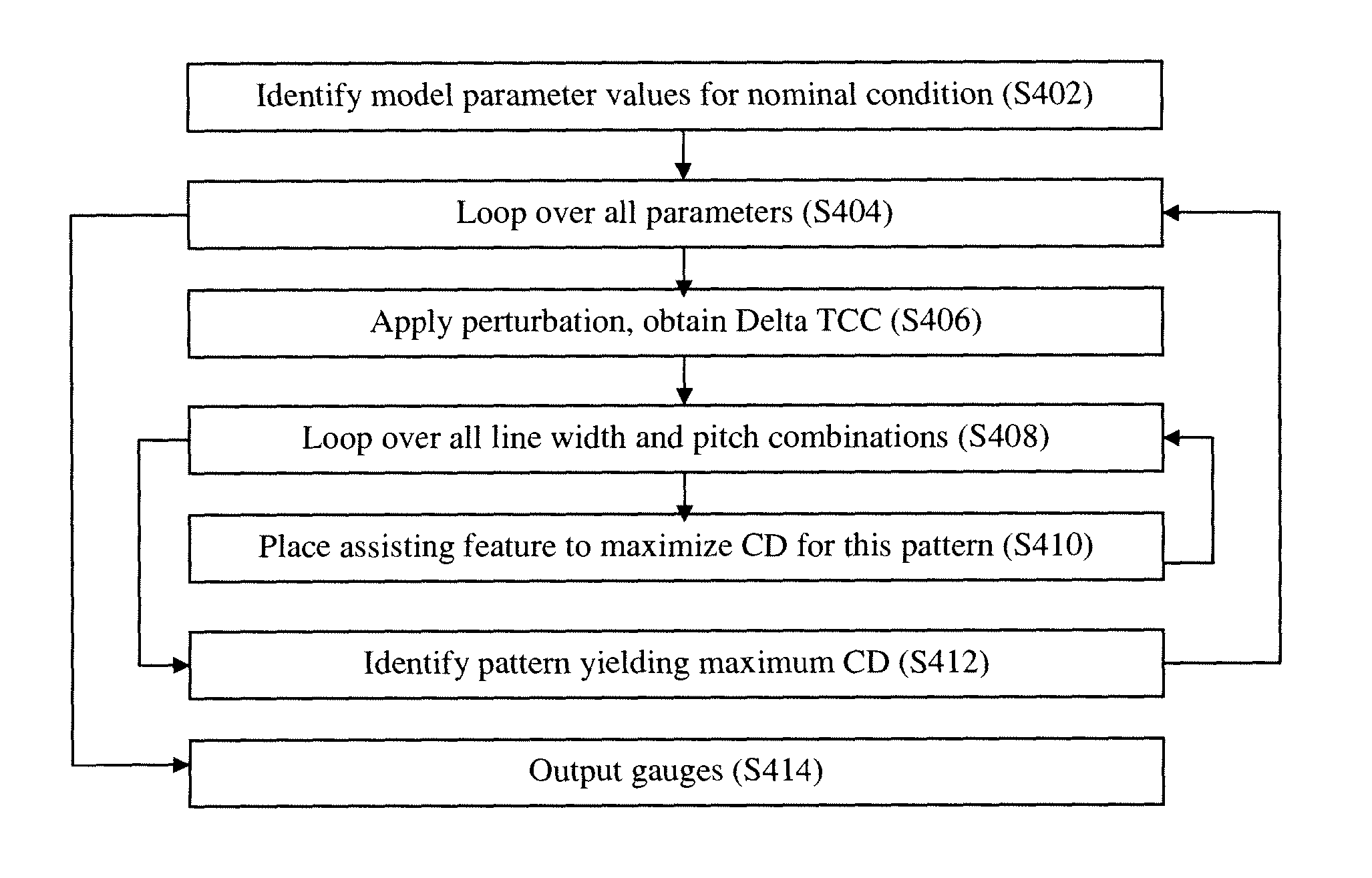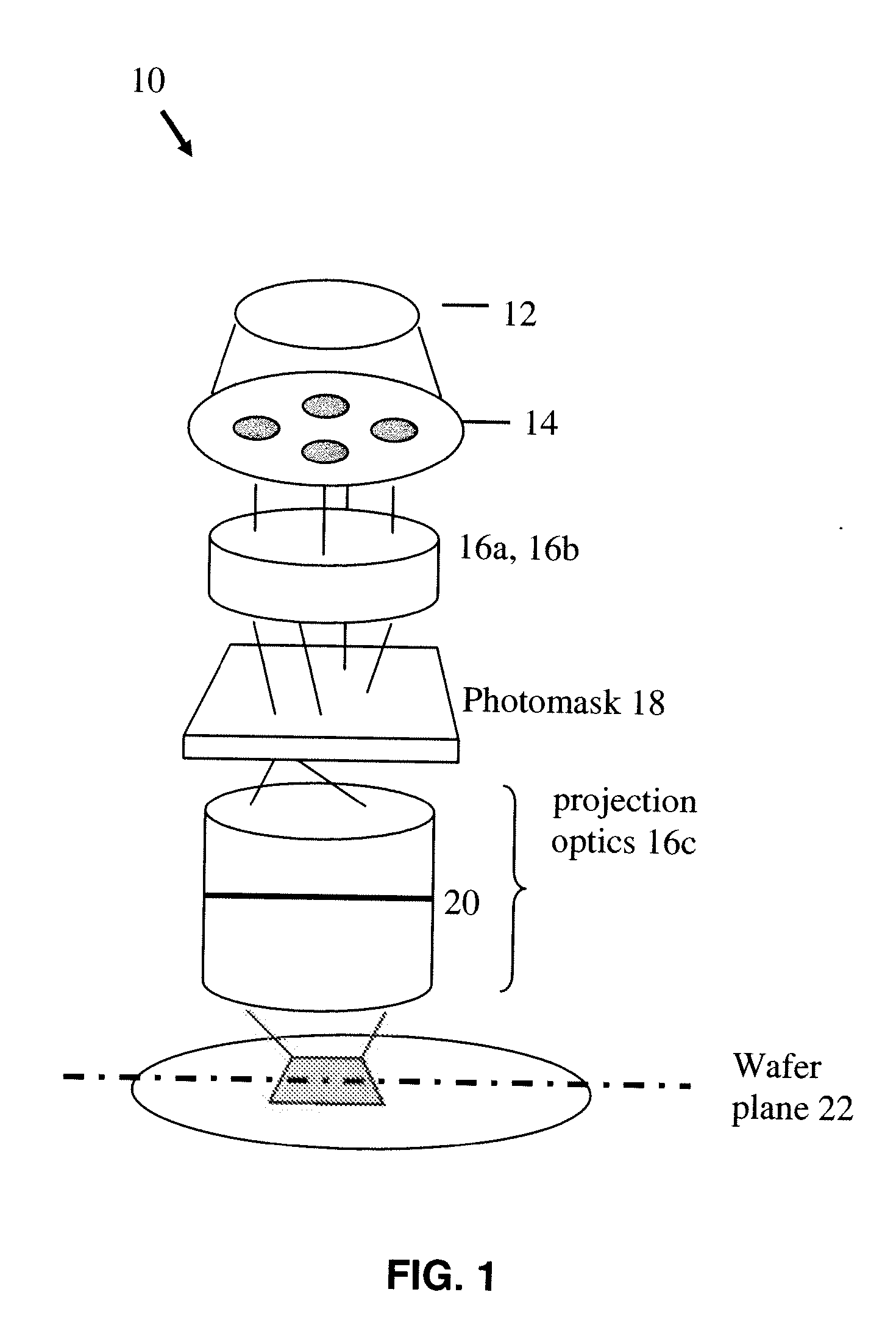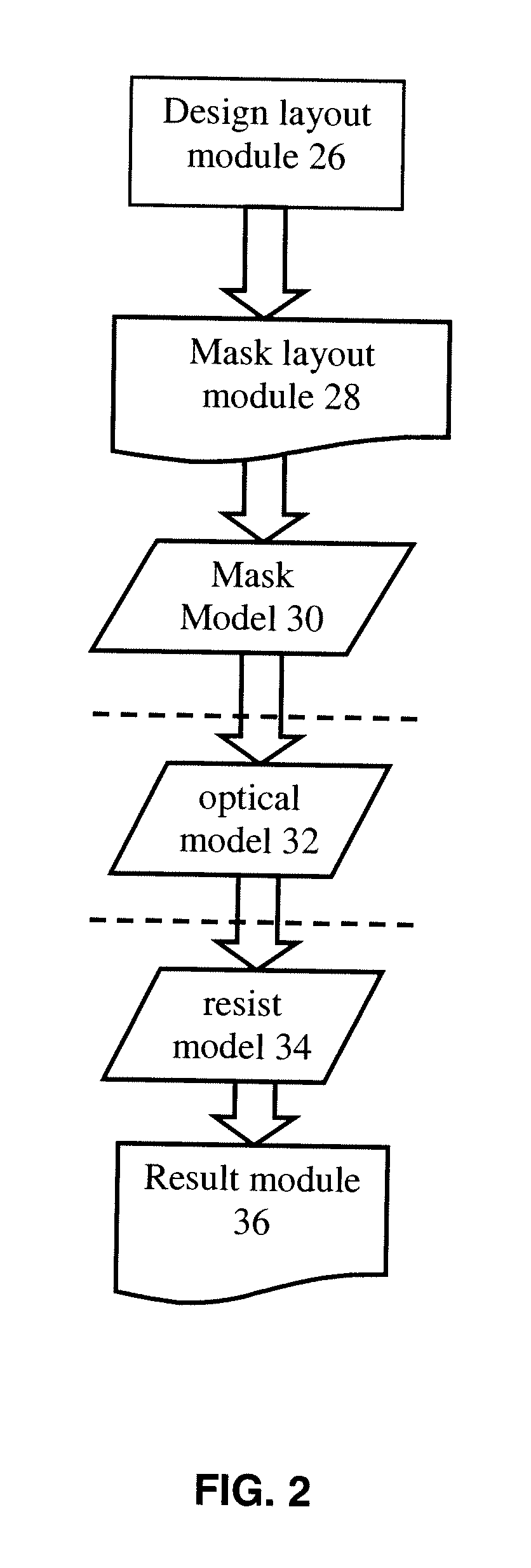Methods and Systems for Parameter-Sensitive and Orthogonal Gauge Design for Lithography Calibration
a lithography calibration and parameter-sensitive technology, applied in the field of design of gauge patterns, can solve the problems of difficult to reproduce a pattern on the wafer, the application of opc is generally not an exact science, and the enormous cost of making high-end mask sets, so as to achieve the effect of maximizing the pattern coverage for model calibration
- Summary
- Abstract
- Description
- Claims
- Application Information
AI Technical Summary
Benefits of technology
Problems solved by technology
Method used
Image
Examples
second embodiment
[0088]A second embodiment to compute AFGM is called multi-kernel approach. In the multi-kernel approach, mask transmittance M(x) is separated into a pre-OPC component (MT), an assisting feature (AF) component (MA) and an OPC corrections component (MC), i.e.:
M(x)=MT(x)+M A(x)+MC(x)
If
Mk(x)=MT(x)+MC(x)
represents the post-OPC layout transmittance, then by applying the inverse Fourier Transform (i.e., space domain representation) of (Eq. 1), the change in aerial image intensity (Delta I) is
ΔI(x)=∫[MK(x1)+MA(x1)][MK*(x2)+MA*(x2)]ΔW(x-x1,x-x2)x1x2=∫[MK(x1)MK*(x2)+MA(x1)MK*(x2)+MK(x1)MA*(x2)+MA(x1)MA*(x2)]ΔW(x-x1,x-x2)x1x2=ΔIK(x)+∫[MA(x1)MK*(x2)+MK(x1)MA*(x2)]ΔW(x-x1,x-x2)x1x2
where ΔW(x,y) is the space domain representation of the Delta TCC and ΔIT(x) is the Delta AI change in aerial image intensity (Delta I) without assisting features. In practice, the inventors note that the following term of the above equation can be ignored:
∫MA(x1)MA*(x2)ΔW(x−x1, x−x2)dx1dx2
Because MA (associated with ...
first embodiment
[0131]In a first embodiment, a set of gauges is created to maximize the pair-wise differential CD sensitivity to different parameter variation(s). The resulting gauges are referred to herein as Max-Delta-Parameter-Difference gauges (MDPDG). In particular, between each pair of the parameters, the invention creates pair-wise gauges that maximize the CD sensitivity with respect to the delta-parameter-difference. If there are N parameters, there are CN2=N(N+1) / 2 pairs or N(N+1) gauges. For each pair, this embodiment specifies that there are at least two gauges, represented as (ΔP1, −ΔP2) and (ΔP1, ΔP2), where ΔP1 and ΔP2 denote the perturbed amounts for parameters P1 and P2, respectively. More specifically, for (ΔP1, −ΔP2), this embodiment of the invention designs the gauge that maximizes the CD sensitivity when parameter P1 changes from its nominal value P10 to P10+ΔP1 and P2 changes from its nominal value P20 to P20−ΔP2, simultaneously.
[0132]In this embodiment, the gauge design method...
PUM
 Login to View More
Login to View More Abstract
Description
Claims
Application Information
 Login to View More
Login to View More - R&D
- Intellectual Property
- Life Sciences
- Materials
- Tech Scout
- Unparalleled Data Quality
- Higher Quality Content
- 60% Fewer Hallucinations
Browse by: Latest US Patents, China's latest patents, Technical Efficacy Thesaurus, Application Domain, Technology Topic, Popular Technical Reports.
© 2025 PatSnap. All rights reserved.Legal|Privacy policy|Modern Slavery Act Transparency Statement|Sitemap|About US| Contact US: help@patsnap.com



